Part 2 of my series on Fountain Pen Sketching – for the Introduction click here.
Note: In this post I am primarily discussing fountain pen usage as it relates to ink and wash sketching with the goal to use a permanent line that will not be affected by the watercolour. You can do a lot with watersoluble ink but in general I use permanent ink lines.
This is also a very personal summary of what I think are the most important aspects of fountain pens.
I want to look at three questions – and as always would love to hear your thoughts and comments at the end.
1. Why use fountain pens for sketching?
2. What are the negatives of using fountain pens for sketching?
3. What makes a good fountain pen for sketching?
1. Why use fountain pens for sketching?
A permanent pigmented ink fine liner pen does a great job at providing a uniform permanent line which can then be painted over with watercolour, but I much prefer a fountain pen!
Here are a few reasons why:
I love the flow of wet ink on my page – ah!
I have no words to describe how much I love it. Fineliners are much drier which naturally means their lines will dry and become permanent quickly. As a result there is less likelihood of smudging as you draw or smearing with the application of paint. However, even though I am a fast sketcher and never wait before jumping in with my paint, I rarely have any problems as the ink I use is fast drying.
But regardless of any potential ‘risks’ there is something really special about the flow of ink on the page.
The nib does not deteriorate and become harder to use over time.
In fact fountain pens normally function better with more use. When I am using a felt tip pen it only takes me a few days before I’ve worn the tip and the quality of line work decreases. My ‘White Joy’ body might be grubby, but the nib just gets better and better.
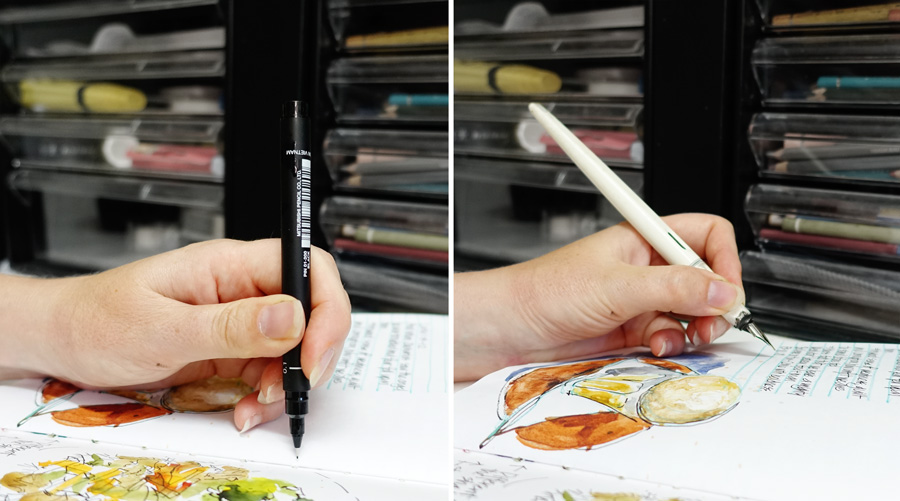
I like to hold a pen at a 45° angle and fountain pens are much better for this.
Fine liners are best used in a more vertical position.
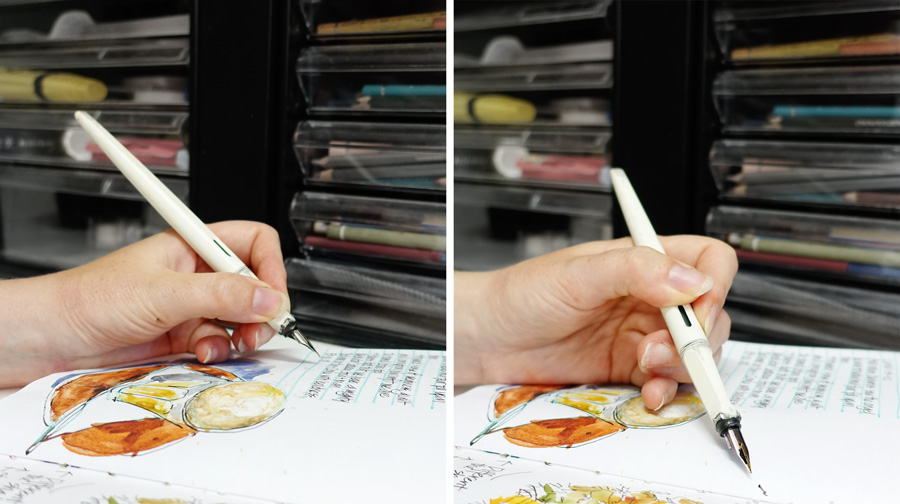
A flatter angle encourages a looser grip and movement coming from the shoulder rather than the wrist. Both of these are good for spontaneous drawing.
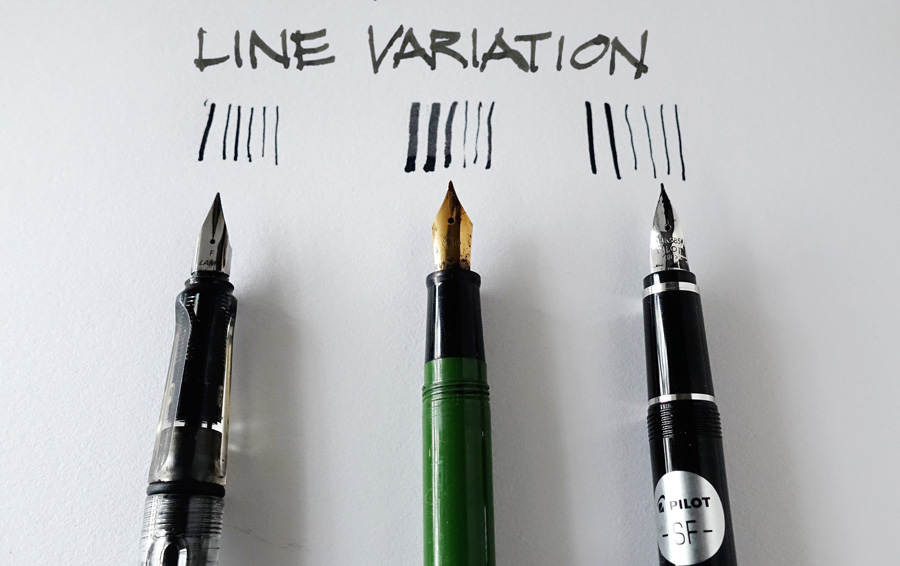
I can get a variation in line using the one pen.
As we will see in Part 3: Using a fountain pen, even a non-flexible nib will produce different thickness in line.
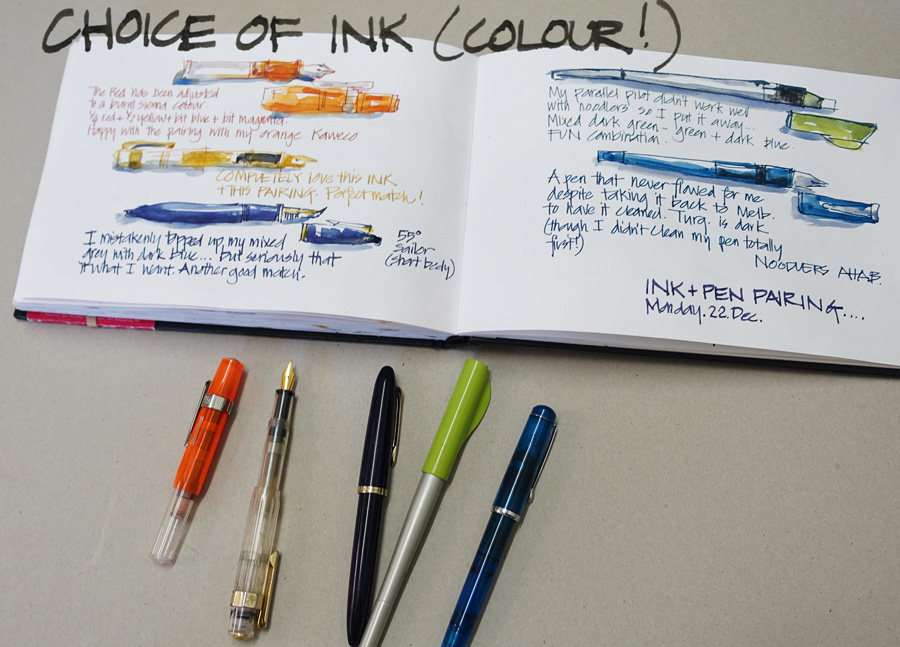
I can choose whatever coloured ink I like.
An increased range of coloured permanent pigmented ink for fountain pens has been an exciting new development in the past 12 months. Now I can go crazy matching inks to my pens! More about ink in Part 3.
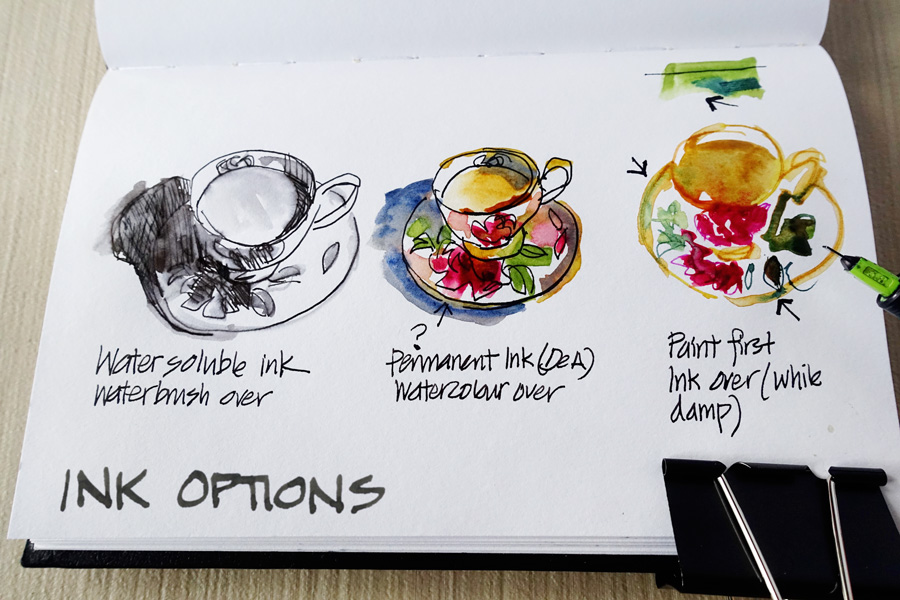
Not only the colour of the ink but the type of ink gives me lots of options.
- I can put water-soluble ink in my pen and then use that to advantage when adding water – line and tone in one!
- The more standard usage is for ink and wash using a pigmented ink that dries quickly and permanently so I can freely paint over without any movement of the ink.
- Or I can do something crazy and put ink over the top of wet paint!
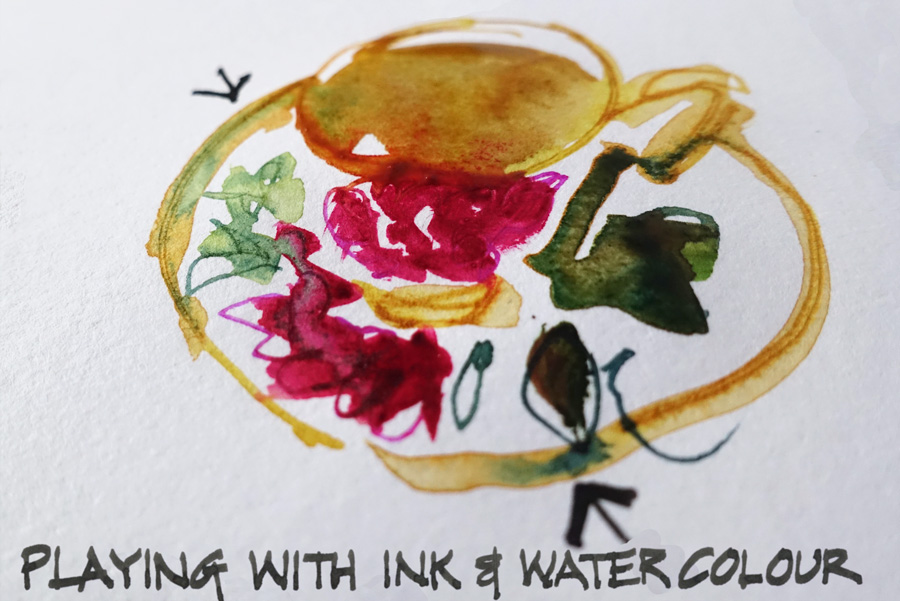
This might look a little out of control (it is a small doodle after all) but this merging of ink pigments with watercolour is something that I do a lot in my sketches.
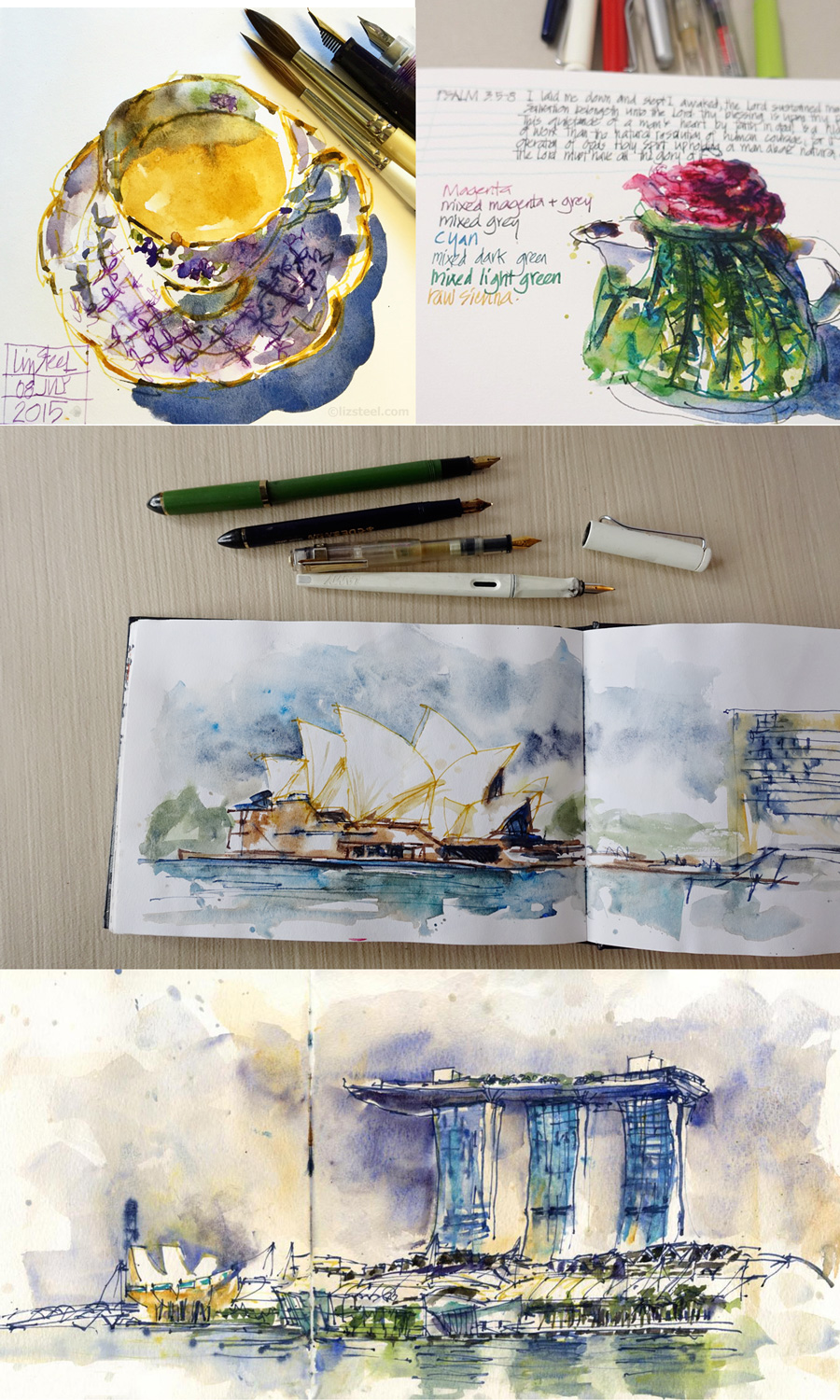
It has been a prominent feature of my teacup (and teacosy) sketches in the past 12 months and well… any of my sketches at home or abroad.
I love the vibration and liveliness caused by the bead of ink at the end of each stroke – BTW the official term for this is ‘shading’. There are some inks that will give you a more solid black line if that is what you are after, but I like shading, especially in my mixed De Atramentis ink – perfect for the gold edge of teacups (sorry I couldn’t resist!)
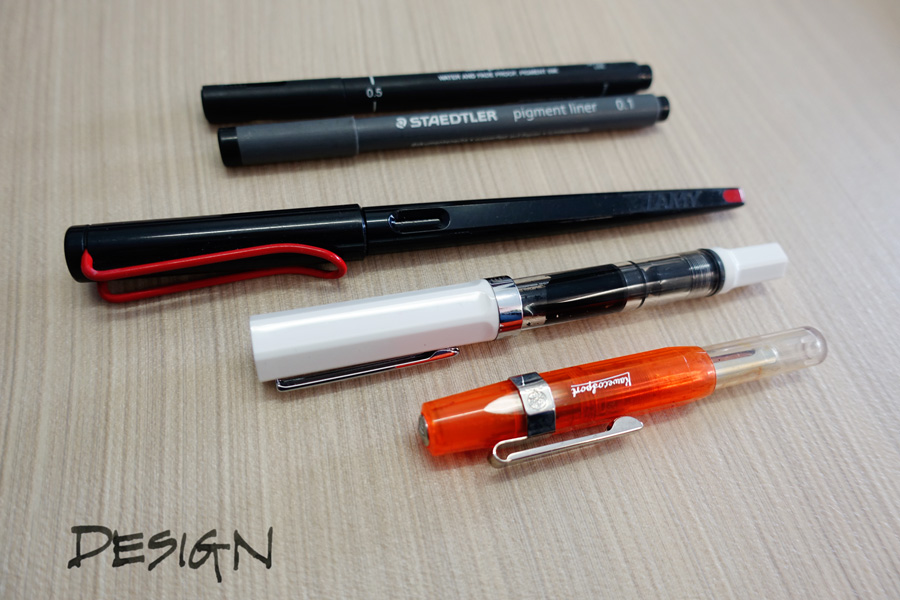
Most fine liners come in very similar plastic bodies but fountain pens are designer objects.
There is so much variety available so you can choose a pen which you really like the look of and fits your hand well – thick or thin, light or heavy. it’s very exciting when you find a pen that just feels really good in your hand and whose design you really love.
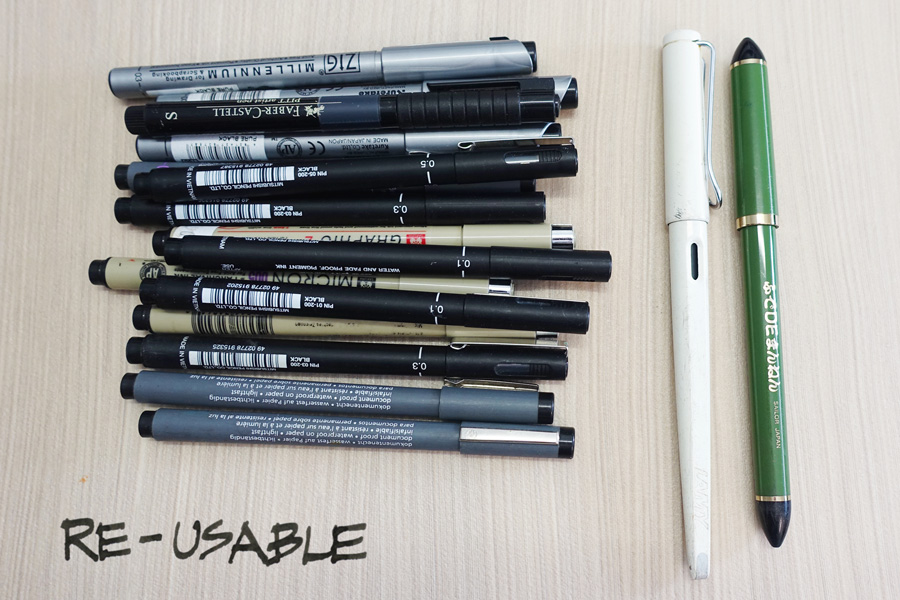
I also like the reusable nature of the fountain pens.
I certainly prefer not to be buying and disposing of plastic pens all the time! I do wonder whether they work out cheaper in the long run but have never done any costings – let me know if you have worked this out. UPDATE: Should have checked the Goulet Q&A first… check this video out!
Of course obsessively buying new fountain pens is an expensive hobby and I am certainly guilty of this, but honestly, I could survive with only two fountain pens. More about pen selections coming in future parts of this series!
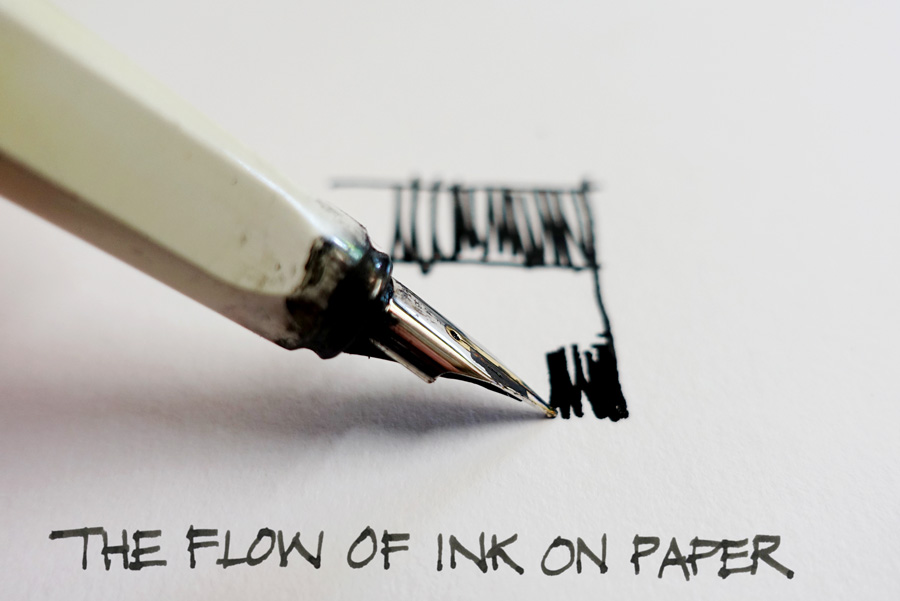
I love the flow of wet ink on my page
Oh, I have said that already! But hey, that is really the number one thing for me so it is worth repeating it. The flow of the ink and my linework are inseparable!
So… have I convinced you yet?
2. What are negatives of using fountain pens for sketching?
If the wet ink is what I love about fountain pens, it is also the thing that makes it a hassle. “And oh! there is the need for care and maintanence!” I hear you cry.
Seriously it is not such a big deal! I think any inconvenience to do with refilling my fountain pen and cleaning it is insignificant compared to the benefits of using it. I am just resigned to the fact that I always have ink on my hands but I have been developing a few strategies that are making it a lot easier – more in Part 3. Note: the ink on my hands is only when I fill my pen (I am looking at refining a careful refilling process!) and NOT from my daily use of it.
Another barrier to people trying a fountain pen is that it seems totally overwhelming. There are so many choices and fountain pen nutters (like me) love getting all technical. I am writing these posts for a mixed audience, some of you want a detailed answer to a specific question from your own experience. Others just want to be told what to buy in order to start! For the second group of people I will have a specific recommendation when we look at basic pens (Part 5) and if all my details get too much for you, just look at the pretty pictures and come back later to read the text after you have had a go with a fountain pen for yourself!
3. What makes a good fountain pen for sketching?
Ultimately any fountain pen with a good flow can be used for sketching – however these are a few things that I think make for a good fountain pen sketching:
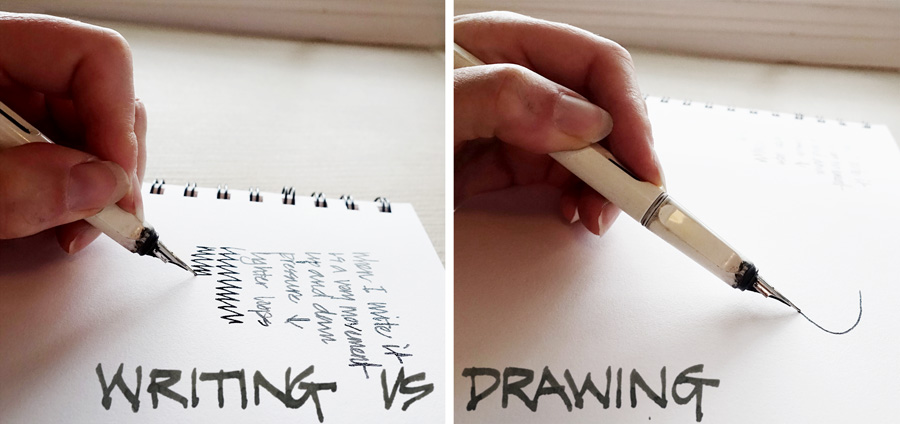
Writing involves a rhythmical movement of up-and-down with a few loops. I find it easy to vary my pressure when I write, creating a heavier down-stroke and a lighter upstroke with associated loop. (Aside: A separate blog post about architects’ handwriting is on my to-do list – I promise!)
But when I sketch, my pen movements are a lot more varied and I am constantly changing my grip. I hold the pen a lot more loosely and the position on the barrel of the pen changes as I work. I therefore need a pen that is not only comfortable in the grip section but in the whole body of the pen.
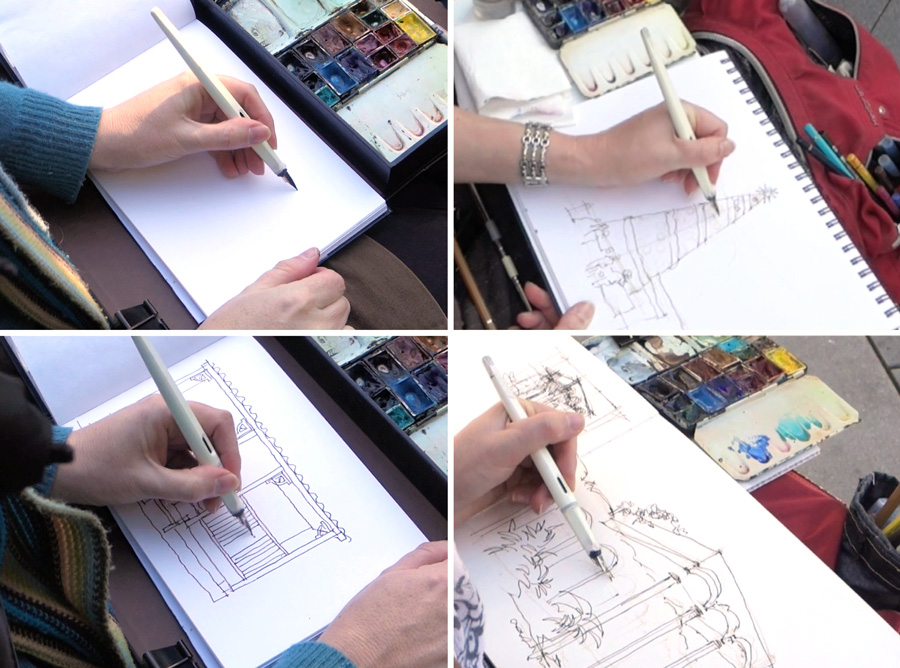
These are a few stills from videos filmed for my SketchingNow online courses. It is surprising for me to watch how frequently I change my grip – I am really not conscious of it while I am sketching, but in the process of preparing these posts I have worked out a few reason why and… guess what? There will be more in Part 3. Hmm, Part 3 is obviously going to be a good one!
These days most of us don’t do a lot of handwriting so are not used to holding a pen for a long period of time. A typical time for an ink drawing would be between 30-60 minutes which is not insignificant. (Note: I am guessing here, as I rarely go longer than 20 minutes with a pen!) It is therefore critical that the pen feels comfortable in a hand and is not too heavy. I have a very sensitive hand so the weight of the pen and the thickness of the body is a big issue for me. However you might have bigger hands and/or prefer and feel more comfortable with a heavier pen with a thicker body.
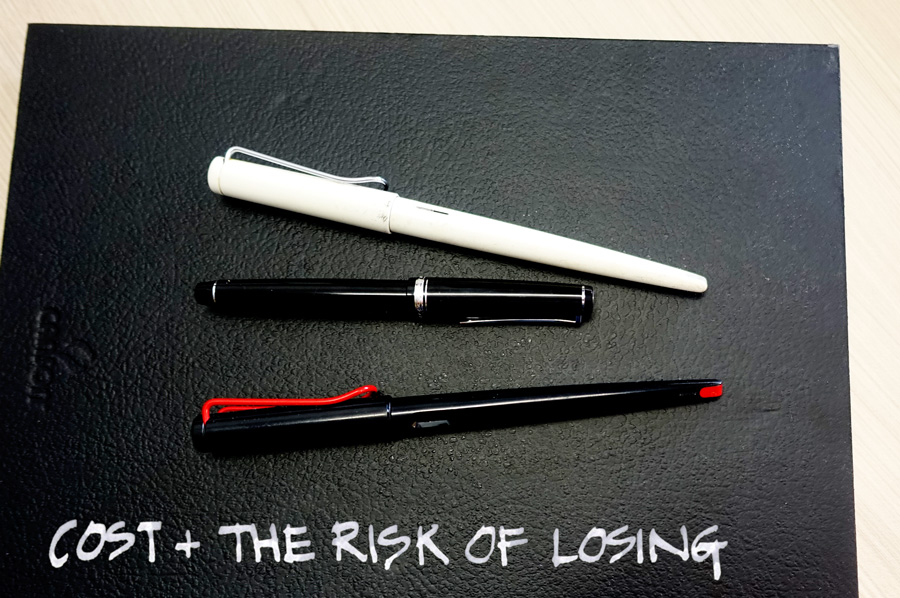
As sketching pens are taken out on the streets constantly and do not remain safe and sound at the desk, it is important to be using a pen that is not too expensive in case it falls out or you leave behind. It is up to you to decide what ‘too expensive’ means for you. They can also get a bit of rough treatment in our sketching kits. I therefore am generally looking at cheaper but well made models.
Of course, I am not following my own advice. I currently use an expensive pen (well a plastic pen with an expensive nib) and am very nervous about losing it – especially as I’d lost two black Lamy Joy pens a few years ago within a few months of each other. Having a white pen makes it easy to see if I’ve left it on the ground or in a dark cafe. And I am now a lot more diligent in looking around for stray art tools before I leave a location.
Anyway, I had better get cracking on Part 3 as I have made a lot of promises about it!
Have you got any other thoughts on what makes a good fountain pen for sketching? Please include them in the comments below.
Click here for Part 3: Using a fountain pen

Once you have a fountain pen you have to start drawing with it! 🙂
If you would like to learn the fundamentals and the start urban sketching please check out my Foundations online course. There are some free intro lessons to help you start and find out more about the course.
FInd out more about SketchingNow Foundations
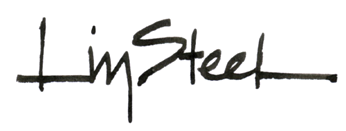
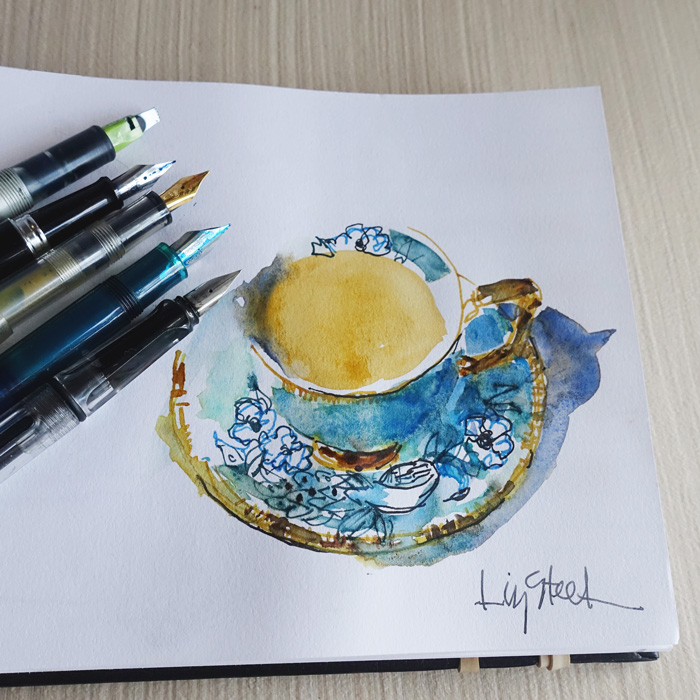
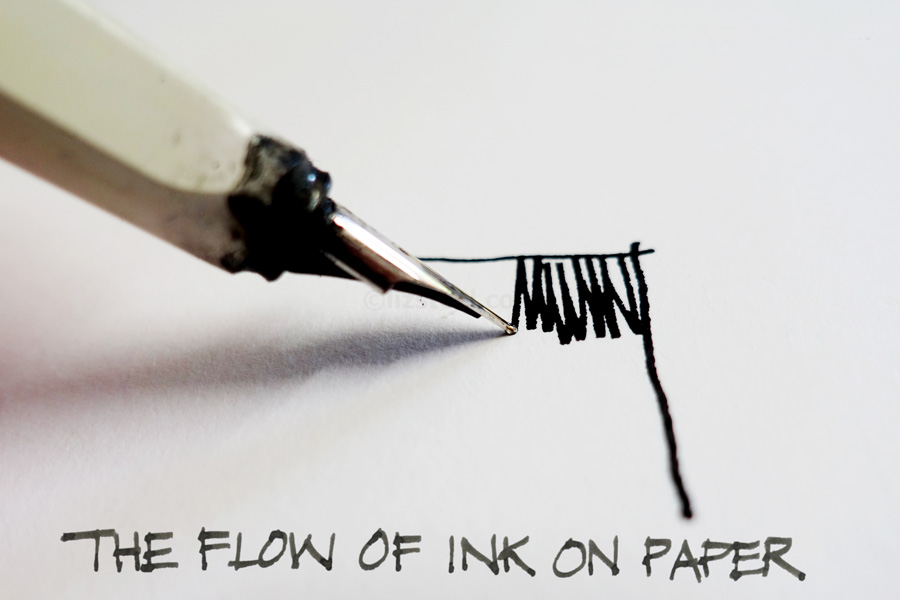
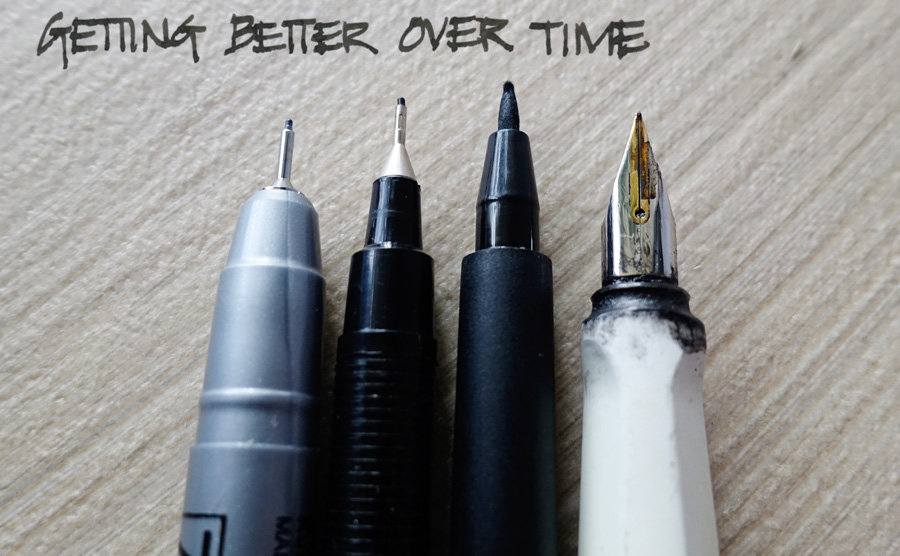
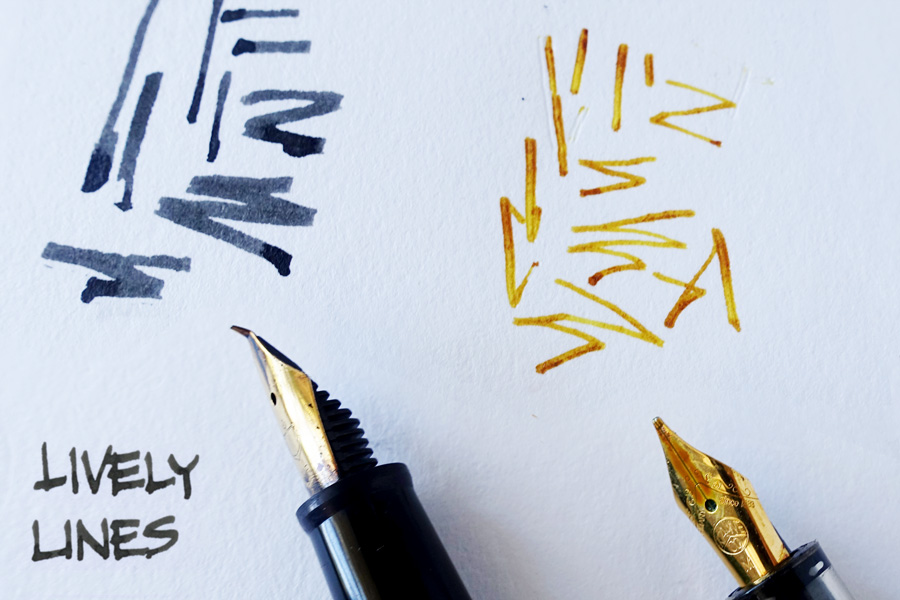
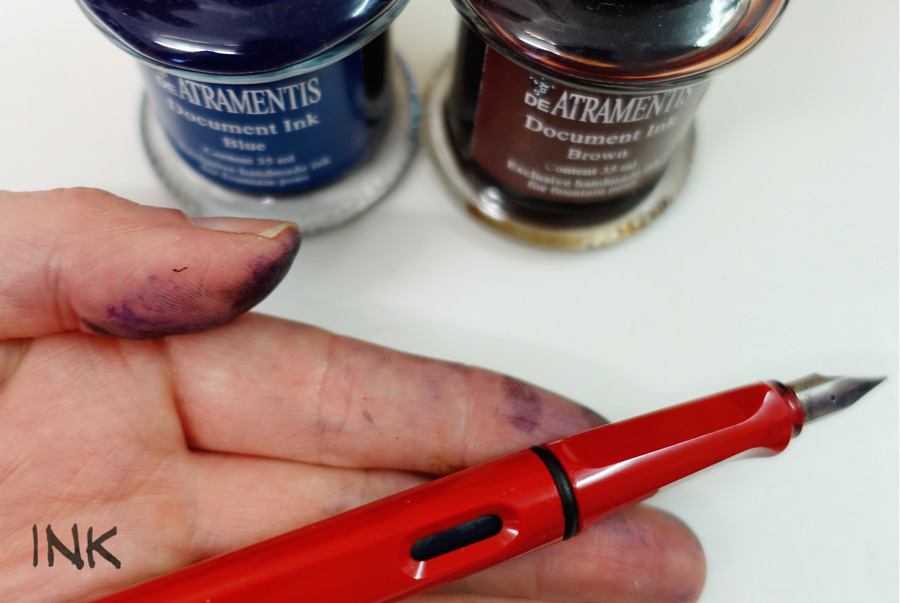
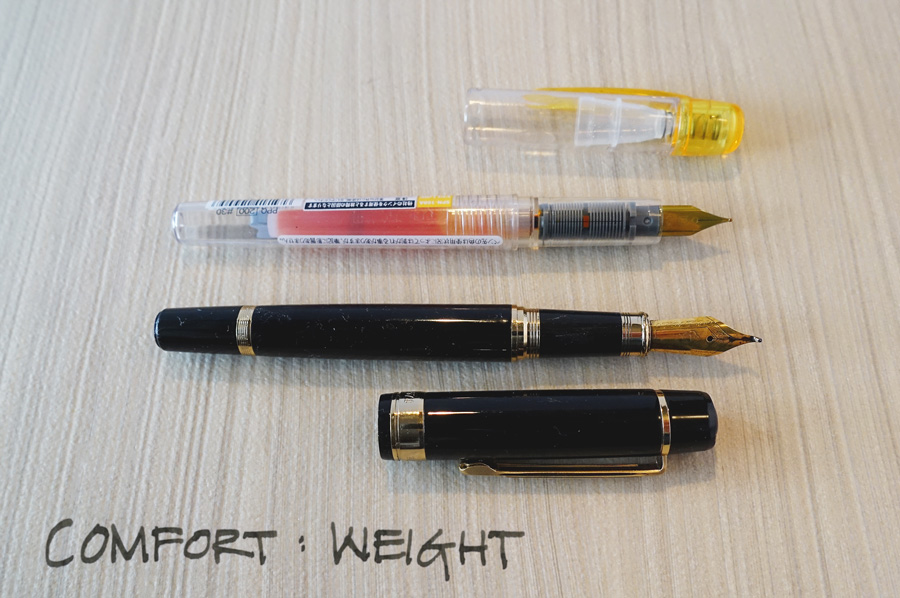
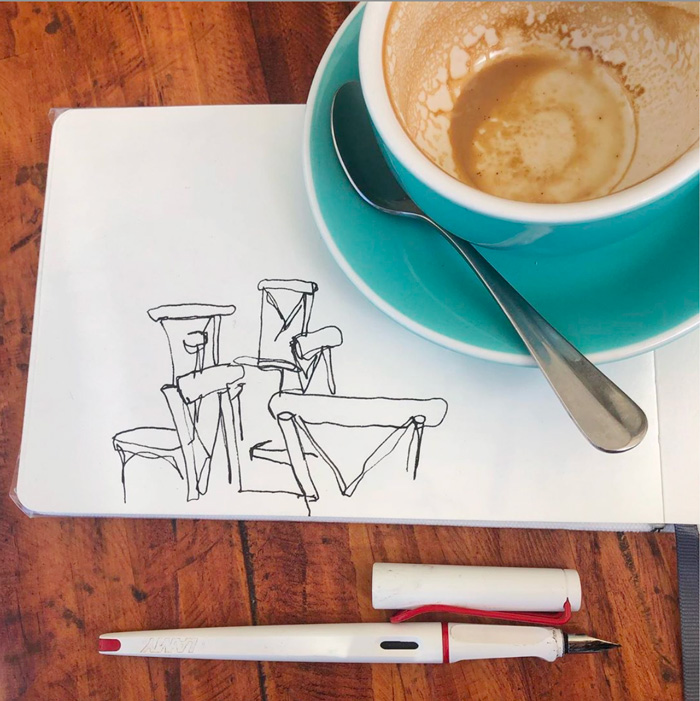
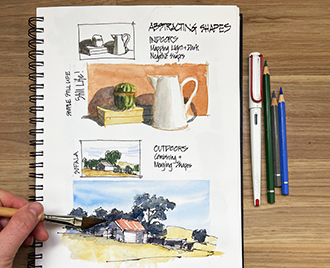

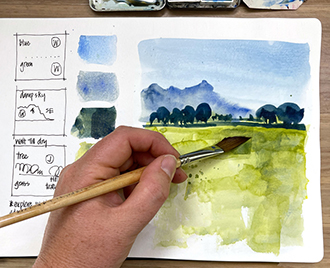
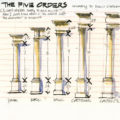
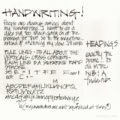
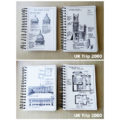
84 Comments
I am also a fountain pen sketcher. I like the committedness of fountain pen sketching. There is no going back – no erasing.
If you make a mistake – go on!
I started with a medium nib Parker as that is the pen I had but I think a fine nib is better, you can get subtler effects.
I usually carry a small sketch kit of a 10x15cm 200gsm sketch book a waterbrush and three fountain pens.
A fine point preppy with super5 waterproof black
An Indian eyedropper pen with a fude nib and sepia non-waterproof ink, and
A Hero fude pen with waterproof Dr Atramentis fog grey – I am a bit disappointed with the colour. It is a greyish blue rather than a bluish grey.
I also usually carry a palette of 6 half pans.
Oh ah! you will have fun with your Hero!
I started sketching a couple of years ago using Micron fineliner pens. I enjoyed them mostly and I still keep a few of that type around for airplanes and other circumstances that are less friendly to fountain pen sketching. But I greatly prefer the variety of width I can get from a single fountain pen versus a collection of fineliner pens. Plus, when it comes to the finest of the fineliner tips 01 and 005 I tend to kill the nibs way before I run out of ink and that is frustrating. Plus I like the ink for fountain pens and how they feel in my hand. Once I tried sketching with a fountain pen I pushed aside my collection of other pens or gave them to my children!
Hi Cristian… I am sure someone will know. That certainly makes it tough to get ink!
Hi Carmel- thanks for comment. So glad to hear that the CDP is doing it for you. I will be including it in my recommendations.
thanks Larry! I just clarified in the post that my inky hands are only when I refill not from general use.
The build up of ink on my white joy is because I haven't cleaned it well each time I fill it up. The white is discolouring too – from the AUstralian sun??? It does get a LOT of use!
My pleasure Alexandra!
hi Jim – yes in Part 3!!!
exactly!!! Actually really good point at the very fine fineliners – I kill mine very quickly too. Much before the ink runs out! thanks!
thanks Sketchbookblue – yes looser grip, DeA flows beautifully and I love the attachment to a single pen!
thanks Brett – sounds like you have it sorted!
thanks Sandra and so good to hear about the improvement in your RSI (from a fellow sufferer!(
I have to agree totally with the point that it's all about the flow of ink onto paper…it's a lovely feeling to have the pen just glide across the page…I find that I hold the pen (Lamy safari) more loosely than a pigment liner which I feel I have to push around more as it has a slight hold on the paper. Also the De Atramentis ink flows beautifully and never bleeds even with a really wet wash. Plus in a "throw away age" it's great to be able to use the same pen for years – always knowing what line you're going to get….just refill the ink and go sketch again.
Looking forward to more of your review.
Great post Liz ! I love fountain pens, and still write – whenever I need – with one. But, only some months ago I decided to try one of them to sketch, and it was such a surprise that I do not want anything else ! I've bought some waterproof ink – Noodlers – and a week ago I bought from eBay "Hero 9018 Black With Golden Trim Calligraphy Nib Fountain Pen". Can't wait ! Thanks for always sharing these precious opinions.
Thanks Liz! Wonderful and very useful posts!
I'm so worried that where I live, Argentina, there's no way to buy waterproof ink for FP. I've researched everywhere and the result is "nothing". And there's no way of buying it abroad because of the tough custom regulations. So my question would be: Does any of my fellow readers of your blog have an experience like mine, living in a country like this? What would be the best solution for using FP and then paint with watercolor over the drawing? The ink brands available here are: Parker, Lamy, Waterman, Monteverde, and two or three more.
Thanks in advance for any useful tip!
Hi, Cristian. I have the same problem. Here’s my solution: I make drawing in ink, gently add some water inside the shapes trying not to touch lines (touching a little is OK) and then add color with almost dry brush now touching lines but as little as possible. Water paint ratio is the key – the less water the better, but not less. However I turned to Ink and Wash now to focus on light studies, but then I hope to improve my technique, which is basically Dry on Wet.
I have a collection of pens but keep coming back to the Platinium Carbon Desk Pen. It costs $12 and $8 for the convertor. I arrived at this pen by accident. I use Carbon black ink which dries instantly and I wanted a pen that would not be ruined by the ink. When I got the pen I discovered it had this fantastic extra fine nip. It is the only pen that I used the ink in. The nib on the my first CDP is worn down to a fine nip. I now have a second desk pen. So have the best of two worlds with a fine and extra fine nib. I recently had a problem with a converter for the first pen. The ink had hardened inside it. I washed it out and left water in the converter. It now works fine. What I need to do is hide the pen and try working with some of the other pens I have purchased. I will also destroy the tip of a felt pen quickly. Although I always keep one as back up in my pen case. This is a great series. Thank you for sharing your discoveries.
Wonderful post and art!
I learn so much thanks to you. Thank You!
I am just working my way into fountain pens for sketching. The main reason (as you have pointed out) is the angle of attack and varied line weight which makes for a much more expressive and natural mark. Currently I am using a dip pen with India ink in the studio, Pitt pens and a Rotring Art Pen on location with water soluble ink.
I would like use a waterproof ink in the Art Pen with my converter but am just a little uncertain what ink to use? And how to clean and maintain it. So I am intently following, hopefully you will cover some of that. Great post and greatly appreciated.
Great post Liz. You introduced me to fountain pens through your sketching class. I discovered an added benefit … fewer periods of RSI in my hand. I think it has to do with the flow of ink and the decreased need to grip the pen and press down on the paper. Now I have a wonderful collection of Fountain pens/ inks/ nibs and discovered all those wonderful blogs/sites.
Do I have any thoughts? Sure… you should have put this in bold face:
"Another barrier to people trying a fountain pen is that it seems totally overwhelming. There are so many choices and fountain pen nutters (like me) love getting all technical."
To hear the 'experts' talk you'd think using fountain pens was quantum physics 🙂 I love how you've boiled it down to what's relevant, Liz.
On the cost thing, I can't imagine how many hundreds of dollars I would have spent on Microns if that was my approach to sketching. As you suggest, a week (if you're lucky) into using the darn things you start wishing you had a new one 🙂 That said, the "buy another fountain pen cuz it's cool" is a force that is strong within me, but that's sort of another hobby as I sure don't NEED them.
Lastly, I can't figure out how your Lamy gets so dirty. And ink on your fingers? Is it leaking? I use pens constantly and rarely clean them, yet none of them look dirty like this. Odd that. — Larry
I do too… you are stealing my thunder for part 3!!! only joking!
Well, you already know what a fountain pen junkie I am, and I am thrilled to read your post because very few sketchers articulate why they favor FPs (even though many do). Anyway, all of my reasons are the same or similar to yours, though I had never thought much about flow — yet that is certainly an important factor for me. If I find that a FP (or the ink in it) seems to flow "dryly," I will stop using it almost immediately. I'd say my #1 reason for using FPs is the line variation and expressiveness that just aren't possible with a technical pen (which I started out with, as many sketchers did).
Tina
I forgot to mention that I often draw holding the pen nib "upside down" which gives a finer line that "right way up" ….if this makes sense! 🙂
Hello Liz! I am so appreciative of all this information, and beautifully explained with all of your sketches–I am so excited to explore with the fountain pen! Sending Santa a request. . .
I've noticed that it's common for white pens to yellow over time. I guess they're not made for street sketchers (grin).
One of the reasons I prefer filling with a pen syringe is that 1) my fingers don't get ink on them, and there's nothing to clean off the end of the pen that most people stick into ink bottles 🙂 It's also easy to carry backup ink/fill stuff.
Hi Liz. When I started to sketch it was fine liners and I bought them all. But as soon as I discovered waterproof ink for fountain pens the fine liners went in a drawer and it's fountain pen all the way! I'm with you-there's noting quite like the feel of ink flowing on the paper! (I left my M200 Pelikan in Singapore somehow. Oh dear.) Thank you for this series!
I have always loved the livelieness and fluidity of a fountain pen for writing and for sketching; it has a more personal connection to me and my hand. It feels more direct and give me mentally a sense of freedom. Now that there are such beautiful colored inks and good quality papers which allow the ink to move easily, i am very excited to bring colored permanent inks into my sketching. Thanks for this series. Chris k
Wonderful! I have a great appreciation of fountain pens and am enjoying this special series. You mention bad experiences with a Noodler's Ahab fountain pen. Do you make much use of flex pens, since they are built to provide line variation? Thank you. (BTW, as you probably know, the Goulets and others explain that Noodler's pens should be cleaned before use, since the feeds may have "machining oils" on them. Of course, other people report problems with Noodler's pens even after cleaning.)
I like the nostalgia aspect. I loved using fountain pens as a child and teen. Now as a sketchbooking mom of six it's as though I'm still allowed to play! I wrote just about the joy of it here: http://www.paperblogging.com/stories/2015123give-the-gift-of-art-pens
Wonderful post on pens!!! I love sketching with Lamy Safaris with various size nibs. Can you tell me what brand your Raw Sienna you used in those sketches. Great color!! Thanks so much for sharing your expertise.
yes I use a pen syringe most of the time too!!!
Thanks Tina.
Ah! you all know about your quest for the perfect line variation!
yay! enjoy and I hope santa listens (whoever Santa is for you!)
yay – all the way! so sorry to hear about your M200… I have my eye on one of those!!!
thanks! Great to read your blog post!
Yes… I have just recently done a flush with the Goluet pen flush and I think it is working better (got a lot of pens on the go at the moment!) I prefer fude nibs to flex, I think… but I am still exploring them
my pleasure Chris – yes the coloured permanent inks is VERY exciting!
thanks Patricia – more about that raw sienna ink here https://lizsteel.com/2014/12/coloured-ink-mixing-raw-sienna-with-de.html
Ah! another tragic!!! ha ha!
Ooooh yes, ink on paper, and those varied lines…I am in LOVE.
I am loving this series, Liz. Good information, and it is wonderful to enjoy our shared obsessions (fountain pens, watercolor, architecture). Cheers!
thank you! Yes 'snap' x 3!!!
Omg this is the best and most informative blog post I've even read! I just ordered a Lamy Joy in a fine nib but thinking I should have ordered an extra fine? I also ordered a Lamy Safari in extra fine 🙂 are the nibs on these two pens interchangeable?
I've recently discovered a love of sketching with fountain pens and colouring with watercolour. Your workshop sounds fantastic!
Hi Liz, thank you for all the information! It was so excitimg, I bought myself a Joy Lamy and Noodler's ink for Christmas. However, I must say I'm having difficulties. The ink doesn't flow well at all. I've watched the Goulet video on how to hold the pen etc but it's still not working. It's very very scratchy and I certainly can't do a wide motion from the shoulder; in that case, no ink is flowing out! Also, I used watercolor over Noodler's ink and after 5 min it still wasn't dry and it smudged. How long do you let it dry before painting over it? I live in Montreal, Canada and this is the only ink I was able to find. So all in all so far, a big disapppointment. Do you have tips to share? Thank you in advance!
HI Gen – a few things –
1. drop goulet pens an email and they are happy to help out.
2. it could be that the tines are out of alignment – see the video links at the end of part under common Questions 3.https://lizsteel.com/2015/12/fountain-pen-sketching-part-3-using_8.html
3. Also in that part are comments about noodlers… some people do have problems with it and prefer the carbon ink or de atramentis. Are you drawing your ink lines over pencil lines? It needs to make contact with the paper!
thanks Audrina!
Thank you for taking the time to respond Liz, I know you must be receiving tons of questions!
my pleasure….I am trying at the moment to reply to everyone and now have 7 posts on fountain pens to direct people to…
Hi Liz
I've been following your posts thru Artist Journal workshop on Fb. I've learnt a lot thanks to your posts on Fountain Pens. But I'm eagerly waiting for that promised post on Architextural Writing. I love the look of that lettering. Please fulfill your promise soon!
Happy Sketching!
Hi Liz, I tried the De Atramentis Document with my Rotring Art pen, but it bleeds horribly when I apply a wash… what am I doing wrong?
Are you sure it is the document ink not the regular fountain pen ink? and it is dry when you apply the wash?
I love the fountain pens. I have a Lamy Safari and a very cool Platinum. Both have cartriges. How can I make sure I have waterproof ink. So far I do mot in either.
I’m using a Pilot pen with Sailor ink, as well as the Lamy pens and Noodlers ink. I ruined a fountain pen by taking it on an airplane. Do you take fountain pens on planes? I can’t remember whether I emptied it first but I think I’ve heard that they can be damaged even if they are empty.
Hi Maren. How was your pen ruined? I take them and use them on every flight. Check out bottom of part 3 for more details.
I have a three Lamy Safaris and love them. In two of them I use a variety of colored inks and the other I keep loaded with Noodler’s Lexington Gray for sketching, an ink that looks just like pencil lead and can be painted over. Some of my fountain pen inks I use with brushes and dip pens and have never used in a fountain pen because they are so beautiful. I go to Goulet Pens for everything, although when I was in London recently I noticed that Foyle’s bookstore has Lamy Safari pens for half the price and significantly less on Leuchterm notebooks too. I picked up a couple while I was there. You don’t think anything will be cheaper in London than in Kansas, but it’s true. I’m a fan of fountain pens and inks now. Not good for my budget!
Hi Liz,
I really admire your sketches and your blog is awesome too! Lots of useful informations and inspiration. I would like to ask your advice – I have a Lamy Safary, with a fine nib but I find it a bit too thin and the ink flow is not so good. I’m planning to buy another nib, like a 1.0 italic. Do you have another recommendation? Thank you very much in advance!
Thansk Lilla, please keep reading this series of articles for my recommendation. An italic nib might be hard to use if you twist your pen while drawing…. but keep reading for more.
Hey, I’m not sure if this has been asked before but I really want to begin sketching so I don’t want something super expensive because my artwork isn’t all that great but I also want a pen that’ll be suitable for art rather than writing? Do you know of any good ones or could you help me pick one out?
HI Al – have you checked out the other parts of this series – where I make recommendations? Part 5 in particular
https://lizsteel.com/fountain-pen-sketching-part-5-basic-pens/
I’m not sure if this has been asked before, but I was wondering if you know how fountain pens work with markers. I want to get into using markers and I would be really sad if I had to stop using my fountain pens. I’m mostly considering getting alcohol based markers, but do you think water based would be better?
Mine worked fine today and they are the alcohol based ones
Yep no problem water based fountain pen ink does not react with alcohol ink at all .
Hello LIz:
Oh Yeh… I love the feel of a real fountain pen. When ever I go to some event I take my fountain pen/s just in case I get bored. I’ll sit down in a comfy spot and draw stuff-any old stuff! I’m a retired commercial artist who did lots of science stuff and P&I worked good for some illustrative needs. Back in the pre-digital days it was called “line work” and was a quick, easy and cheap way to reproduce for newspapers.
I favor Lame pens for outdoors but on the drawing board I still find lots of reasons to use my various pen nibs that one has to dip.
Good Article!
Jim
This post really convinced me to give fountain pens a try. I’m getting a bit fed up with the too clean look of my fineliner lines- but I’m also not good enough yet with a brush pen (I’ve ruined a lot of OK sketches by accidentally painting a way too broad stroke).
But I’ve got one question, and as I saw you’re also left handed, maybe you know the answer. What always happens when I use a fountain pen, eventually (after 6 months or so) the nib sort of breaks – all of a sudden it won’t write anymore and upon closer inspection, the nib parts are misaligned. Bending them back has never worked. It’s happened with cheap primary school-issued pens, expensive Parkers etc. etc. I always assumed that it had to do with being left handed, or is this just a common issue with fountain pens? I’m a bit hesitant to splurge on a nice fountain pen, then having it break on me again… (I swore off all fountain pens after having one fail on me during my Philosophy finals… Having to adjust my handwriting to ball point pen was not fun at that point).
I took calligraphy when I was in High School. Now I’m working toward my 40th reunion. Anyway… I see these ‘disposable’ fountain pens that come with several different colors in a pack and wondered if that wouldn’t be an ‘economical’ (OK CHEAP) way to try my hand at them… any ideas?
I love those disposable pens- they are bullet proof and ‘fast’ enough for my quick lines! They aren’t very ecological but perfect for starters and risky work, like traveling, etc. Turn them over for finer lines, they are very stiff otherwise.
Go for it if you haven’t already!
Hi Liz, Wow! Great series of posts on the use of Fountain Pens. You did a very thorough job.
You mention your De Atramentis ink mixture. I love this color — how did you achieve it? What’s the mixture?
Thanks,
George
Liz,
I tried using fountain pens. They clog. They only work at a certain angle. I shake them to work. Most of my tshirts are ruined. I cannot even begin to understand what everyone here sees. Im going back to primascolor pens. thanks.
Hi John, so sorry to hear that you have had such trouble. What pen and ink were you using?
Hi Liz,
I apologize for my impatient comment. I was just frustrated at the time and I lack knowledge in this area. I have a Lamy Safari but I didn’t know about ink types. I saw you post on inks, but thought it was more a topic of “favorite inks” rather than what kinds will or will not work as well. Turns out I was using Higgins waterproof pigment based ink, which was clogging my pen. So my ignorance. I’ll keep reading.
Ah! that explains it. hope you can clean out your pen fully and then get hold of the right ink!!! All the best.
I’m new to illustration/comic sketching and I just tried my new Copic SP pen yesterday. While I’m impressed with the fineness of the lines, I felt a little like a child grasping a crayon. I found myself wondering if I could draw with fountain pens instead. I’m also a writer, and I’ve writing with fountain pens for years because I love the flow of ink just as you said. Your article was very helpful. I’ll have to give it a try. 🙂
I have been wanting to dive into a fountain pen for drawing for ages but there are a few things stopping me:
1) The price. The ink, ye gods. In the UK it’s hellshly expensive. And I thought Rapidograph inks were bad! Just looked up Carbon Black on ebay. £19 for a tiny bottle.
2) I already carry around dip pens, with ink, so it’s not that convenient as I guess I’d still need to carry some ink refill or cartridges? Dip pens are really cheap – few quid for the holder, 50p for a nib, they rinse clean. I also use quills, even easier, and I can find the feathers for free!
3) Variety of nibs – cheap chinese ones have these but the ones you mention seem to have medium or fine or nothing.
4) Refillable markers are just as ecological AND can use indian ink. That’s the biggest thing, ANOTHER special ink after the acrylic, endorsing, drawing, indian inks I already have?
It really does seem like a premium thing for those who want to show off…
This is very helpful, thank you.
I love to use fountain pens for sketching but I have a big problem with ink smearing when washing over with watercolour. I have tried Noodlers, Atramentis Document Ink and now I am using Platinum Carbon. None of these have been smear free for me, Noodlers being the worst and Platinum Carbon being a little better but not brilliant. I have tried all three inks on a wide variety of papers and even left the ink to dry for several hours but still my watercolour washes are spoilt with smearing from the ink. I keep reading and watching reviews of various inks and I have seen with my own eyes other artists wash water over the second two inks with perfect smear free results. Is it just me that has this problem? I am getting rather disheartened. Love your articles Liz.. I really appreciate your passion for sketching and the trouble and time you invest in sharing your experience and knowledge.
What bothers me the most about fountain pens isn’t the pens…it’s that grade school “monkey grip” that I’m seeing so many artists using. We humans do have opposable thumbs, you know, and holding the pen with the tip of the tumb rather than with the base of the thumb wrapped around the index and middle fingers is going to save you from a lot of pain later on. Drawing and writing with the monkey grip forces the all of the tendons through the carpal tunnel band at once which can lead to some serious damage for artists who draw every day. it’s really the fault of teachers who are more concerned with passing and processing their students rather than actually teaching them. Talk with a physical therapist who can show you how to correctly hold a pen so you don’t end up paralyzed with carpal tunnel or radial tunnel syndrome in your drawing arm.
Well said Tom… I couldnt agree more. A very valid and extremely important remark!
Hello Liz. Everytime I’ve tried drawing in the past I could never get the loose look I wanted, even in art classes, so I took up photography. I got very good at photography experimenting, especially with pinholes, but I no longer have a darkroom. I’m getting slightly looser now by watching YouTube videos, and just sketching. I’m also experimenting more. I started out using a #2 pencil with kids watercolors, then fine liners(.003-.5 are my favorites), but I sometimes bend the tips, and they don’t always work especially when the paper is damp, and I’m using student grade watercolors. I then bought an inexpensive glass dip pen, and metal dip pens from Amazon, all for sketching at home from reference photos. Digging through a drawer I found a nearly empty Pilot Varsity in purple that lead me to buy two reconditioned fountain pens from Pen Chalet which I’m now waiting on to arrive. Now I’m on an ink search for permanent black, grey, or brown inks which is how I got here. Thank you for discussing the issues that everyone eventually evolves toward.
I recently purchased x2 Noodler Ahab’s, only to have them both poooour in out of the nib/ feed section. Due to being absolutely OBSESSED with how it does write (when it’s suppose to), I have literally spent ‘countless’ hours ripping them both apart, putting them back together, swapping out parts, purchasing a new ebonite feed (the original one just slid right through the cuff; not exactly sure how that passed quality control! And re heat set them both…. they just continue to pour ink out of the nib.
I would sincerely pay you to fix mine, if you think you could. I’m so desperate to get at least one of mine working, that I sent an email to Nathan at Noodlers about my experience; I never heard a word back.
Hi Amber – I’m sorry I don’t know how to fix that. I hope you heard back from Noodlers.
NEWSLETTER
Subscribe for first notification of workshop + online classes and more.